Membership Resources: Experience the CFA Hotline
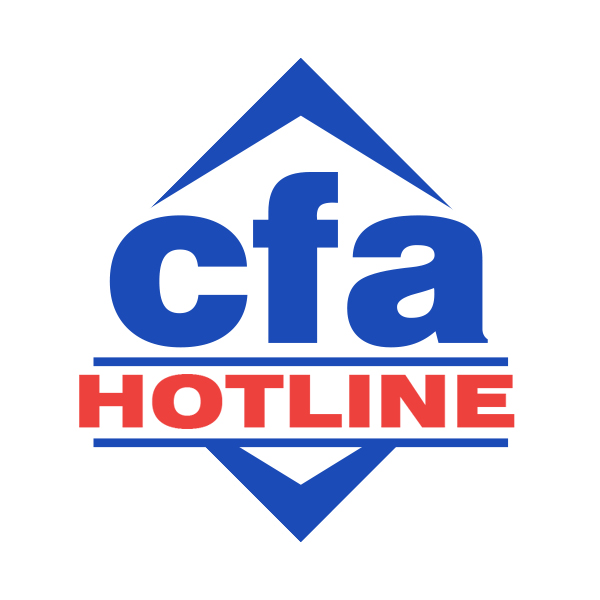
Ninety-three people, representing seventy-five different member companies, currently participate in one of the major resources developed by the Concrete Foundations Association. This resource, known as the “Hotline,” brings together two of the primary reasons this association was initially developed: sharing experiences and providing support from qualified sources of information. “When passionate and interested minds come together in any kind of a space,” states CFA Executive Director, James Baty, “instantly there is a sense of purpose and value for the investment of time and resources.”
It was to fulfill just such a purpose that the idea of a Hotline was generated by the Board of Directors during their strategic planning in 2012. During that session in Minneapolis, the board members assessed the strengths, weaknesses, threats and opportunities of the Association, the common components of any SWOT analysis. They rationalized that one of the weaker areas for the general Association membership was the requirement for contractors to attend a physical meeting in order to gain the sense of participation, togetherness and idea sharing. There were no resources readily available outside conventions or regional education events where members could trade ideas and test challenging situations. Therefore, the board decided to take advantage of the internet, using it to bring members closer together on a frequent and convenient basis. “Think of the Hotline as an information roundtable that exists in real time,” states Baty. “Any employee of a member organization can join the discussion, pose a question about any aspect of business, and freely comment on questions that are posed by others.”
Activity on the Hotline occurs in varying intervals with an average of at least one inquiry per week. Topics range from software packages employed in different ways to contract disputes; forming details suggestions to business decision-making, and many other topics. There really are no restrictions to kinds of inquiries made. Generally speaking, the more detailed the question, the more realistic and complete the responses will be. One of the latest discussion items was generated on the topic of water stops between footings and walls. This dialogue is shared in order to provide an example of the engagement inspired by this member resource.
CFA Hotline Inquiry: Dumbbell Water Stops
In early May, the Hotline received an inquiry from a contractor member posing the following question below. Each answer received is also provided. For the most part, questions and answers are accompanied by the contact information of the person writing, allowing for private off-line conversations to be had for deeper discussion, as well as to help determine the context and regional thoughts on the situation when possible. However, for this article, the names and contact information have been removed to maintain member privacy.
Q: We are doing a job that calls for dumbbell waterstop between the footing and the wall, and also on the interior footing spread between the footing and the slab. Admittedly, I have used strip waterstop countless times, but I have never installed dumbbell waterstop. Was looking to see what the best brands are in people’s opinions (nothing by product name specified by engineer) and any tips on installing. Thanks.
The rationale behind creating the CFA Hotline was that a primary value of belonging to an association of peers is to glean from others’ experiences with new technologies, details, specifications and projects. Let’s take a look at some of the experience that was shared with this inquiring CFA member.
A1: When we are using a dumbbell waterstop, we often use the [attached brand], but there are many to choose from. For our typical installation, assuming there will be vertical rebar tied in place prior to footing concrete placement, we will wire tie a 2×4 against the vertical rebar. Then we will c-clamp the waterstop to the 2×4. This will keep the waterstop off of the rebar and allow you to place it at the proper elevation, nice and straight. Hope this helps. Actually, I hope someone else has found a better way and will share with us!
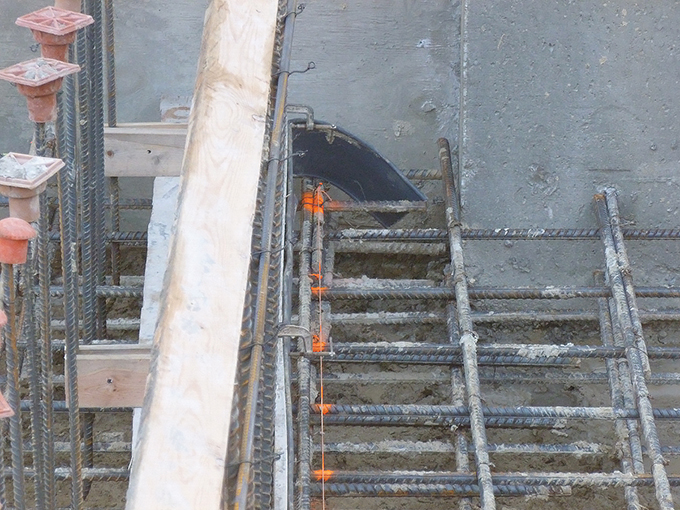
The product literature provided by this response not only gave immediate feedback for brand options to consider, but also brought the Association information about a company that could get plugged in, through CFA membership, to further educate the Association as a whole.
Another participant, receiving the original question as well as this initial response, replied:
A2: We have used it in similar applications, such as the joint between floor slab and wall intersection on DOT salt storage facilities. We always use this same brand.
As seen from these two interactions, the originating member can begin to build confidence in the solution proposed or consider alternative approaches. With the contact information provided, he or she may also be led to extended, private conversations, if necessary, about specific practices, estimating, etc.
The Hotline also often brings variation in approach and ideas about how to take opportunities like this in different, sometimes unexpected directions. Simply accepting the detail or specification provided may not be in the best interest, depending on experience or the availability of materials or technology in a given market. When such a situation arises, participants share alternative thinking and ways of encouraging the project team to accept a value-added proposal.
A3: We now ask to convert the waterstop to a swelling material [brand provided]. This product is applied from a special caulking gun after footing placement. We have done water tanks and many jobs below water table. Also, it can be used vertically when you are butting into existing structure. We have not had a leak at any joint where we have used the product. Engineers have, in general, been very receptive to the change proposal.
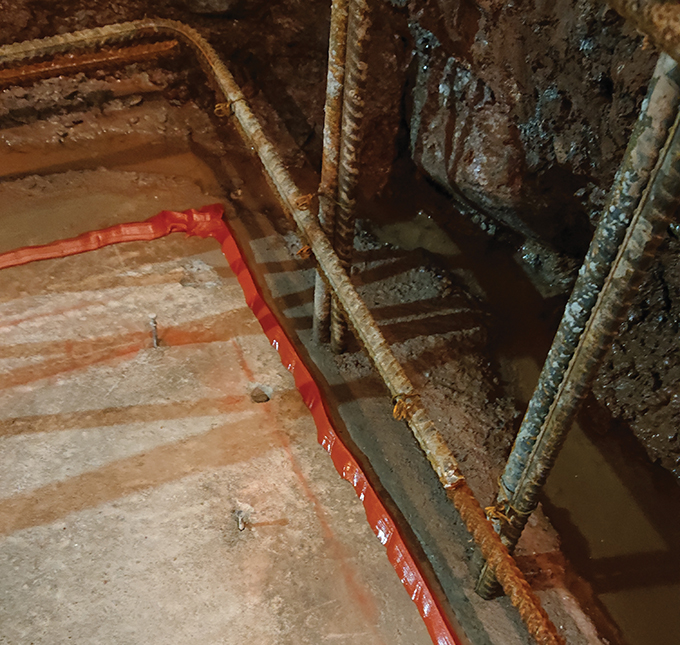
And with this change in direction, more participants began to corroborate this application suggestion.
A4: We also request to use a swell-stop type waterstop where possible. It’s just easier and quality control is better. Though I am not familiar with the type out of a caulk tube, we usually use the tar rope type. Do be aware that there is a minimum thickness of concrete on each side of a swell-stop type of waterstop. If the concrete is too thin at the location of the product, the pressure exerted by the expansion of the swell stop can crack and even break concrete. We had this happen a couple of years ago, where we butted a slab against a wall after attaching a swell stop on the wall. Poured the floor 8” thick, but the swell stop was specified to be around 2” from the top of the slab. A crack later developed, running kind of parallel to the wall. We finally figured out that the expansion of the swell stop occurred prior to the concrete gaining enough strength to resist the pressure exerted by that swell-stop product. I would also caution that swell stop is water-activated, so you can’t leave it exposed if you will have rain or snow. Good luck!
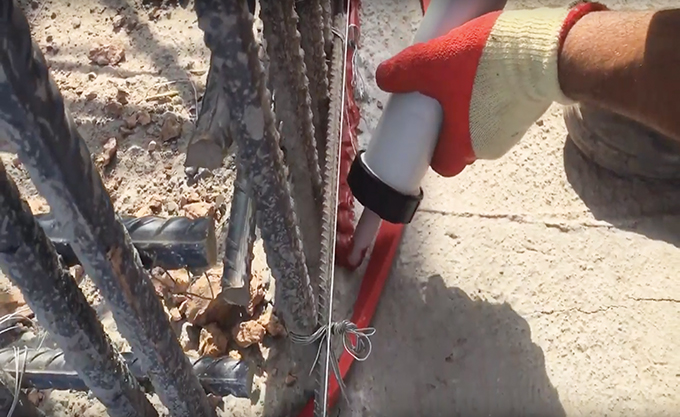
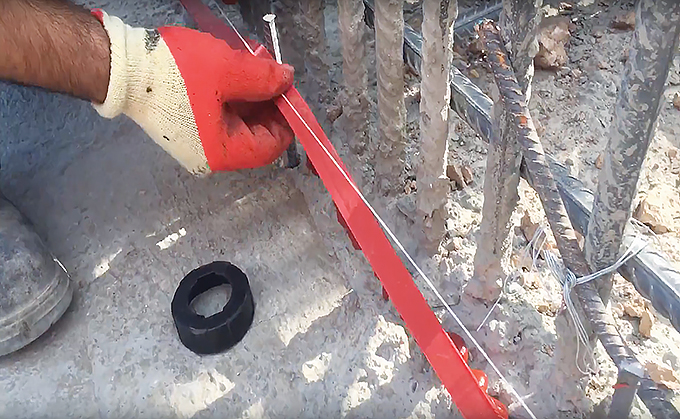
Here you have corroboration of a different kind: sharing risk and reward experience to help keep the original questioner (as well as all participants) from getting caught making similar mistakes, costly repairs, and unnecessary replacements. As the conversation continued, additional comments were offered, having product suggestions and further experiences.
A5: We prefer to use the swell-stop bentonite. We also have tried the adhesive in caulking tubes to glue the swell stop in place. It works really good.
A6: Hello, over the years we have used dumbbell waterstop and it is nothing but a pain in the @$$! We were introduced to the same swell-stop product and have never looked back. If dumbbell is specified, we immediately ask the engineer or GC about using the swell stop and they have yet to turn us down.
These two comments further show the ability of the concrete contractor to apply reason and experience to lead to the overall success of the product. For those who perhaps have not thought to use their expertise to suggest a better solution when working with a project team, this gives encouragement that many times project specifications and details are borrowed or applied from a general set of conditions – not necessarily state-of-the-art research. Project teams are willing to listen to solutions that will guarantee success, especially if they are cost-neutral or have the chance of eliminating problems.
As the conversation for this particular issue drew to a close, another comment offered support for both methods, and sometimes the use of both to make sure water is never an issue.
A7: We also use dumbbell and bentonite waterstop on pits, tunnels, salt buildings, and manure containments. When we have vertical steel on each face of the wall, we use bentonite If there is only one vertical bar, then it is dumbbell. We also clamp our dumbbell to a 2×4, and often it is in a key way as described earlier. Some inspectors have made us melt the ends together, rather than just overlapping them. We will pull the bentonite in with a fish tape or string and apply the adhesive as we unroll it. The ends are butted and tied together and then we just keep pulling. When we have it pulled in, we take a rebar and tap the waterstop to the footing to seat the adhesive. Bentonite still seems to wiggle with the glue, but the vertical bars keep it from the outside of the wall. Have not used one brand that is better or easier than the other to apply. Good luck.
The Hotline is one of the CFA’s most consistent membership resources and serves a broad membership base. If you have yet to engage this resource, you are encouraged to send a request email to hotline@cfaconcretepros.org. If you are not yet a member of the CFA, we ask you: what are you waiting for? Each person on this communication topic and the many other members participating regularly would eagerly tell you that this one resource is more than worth the annual commitment to membership. Start today by emailing us at info@cfaconcretepros.org or by going directly to www.cfaconcretepros.org.







